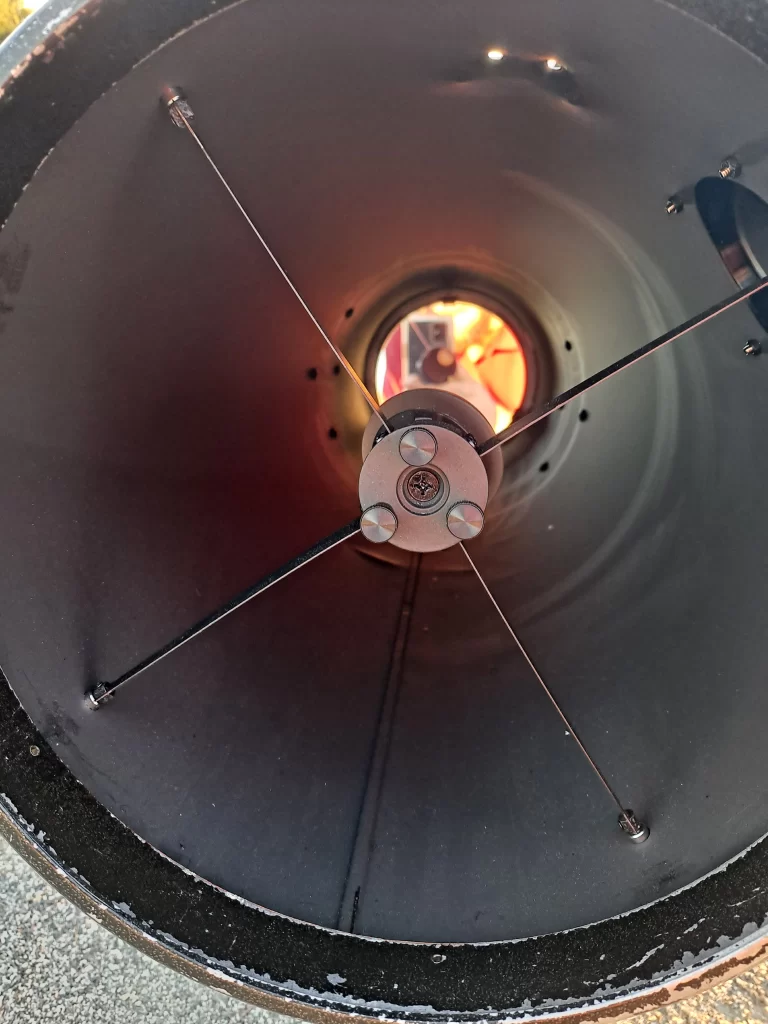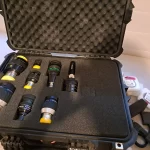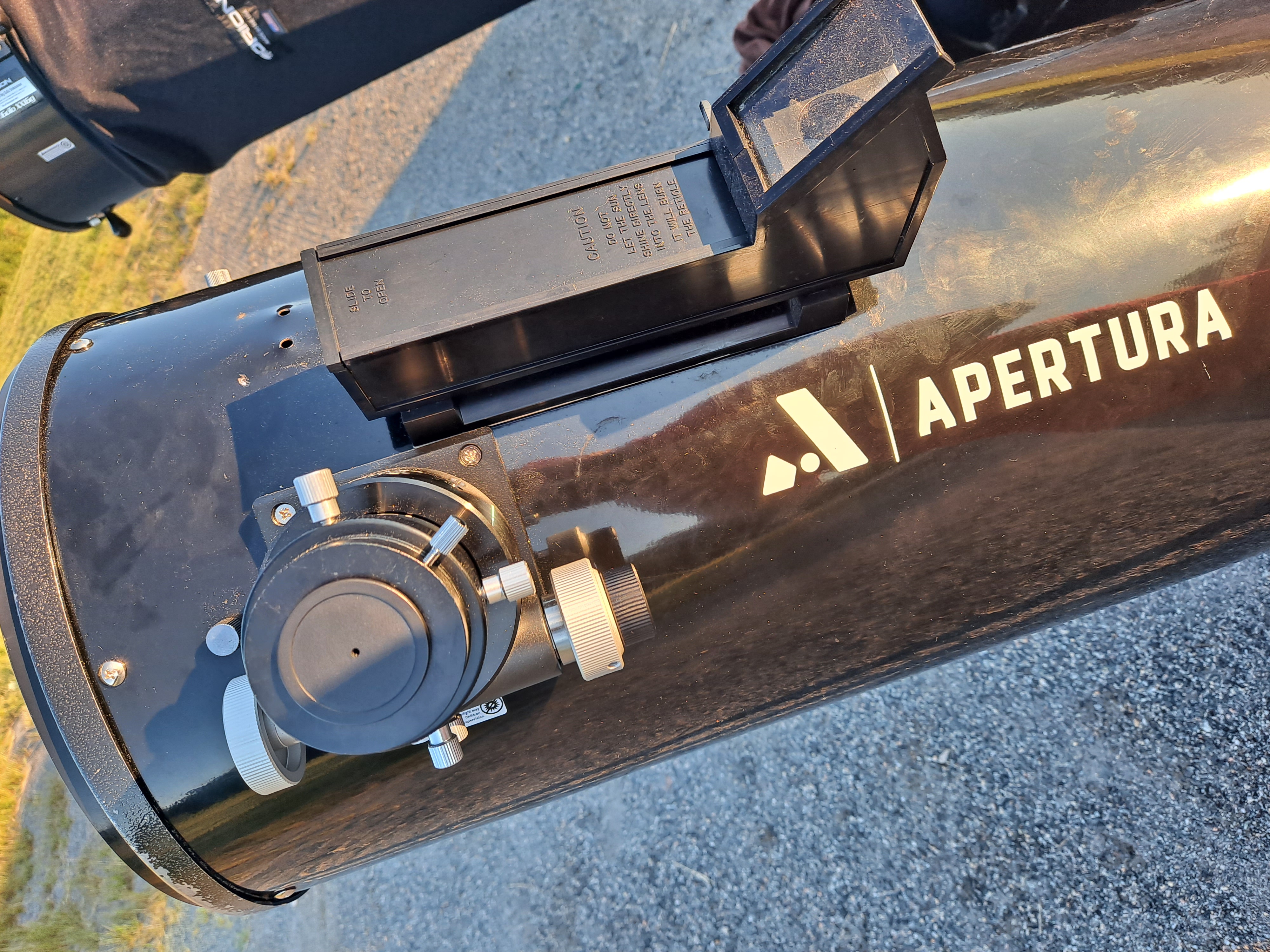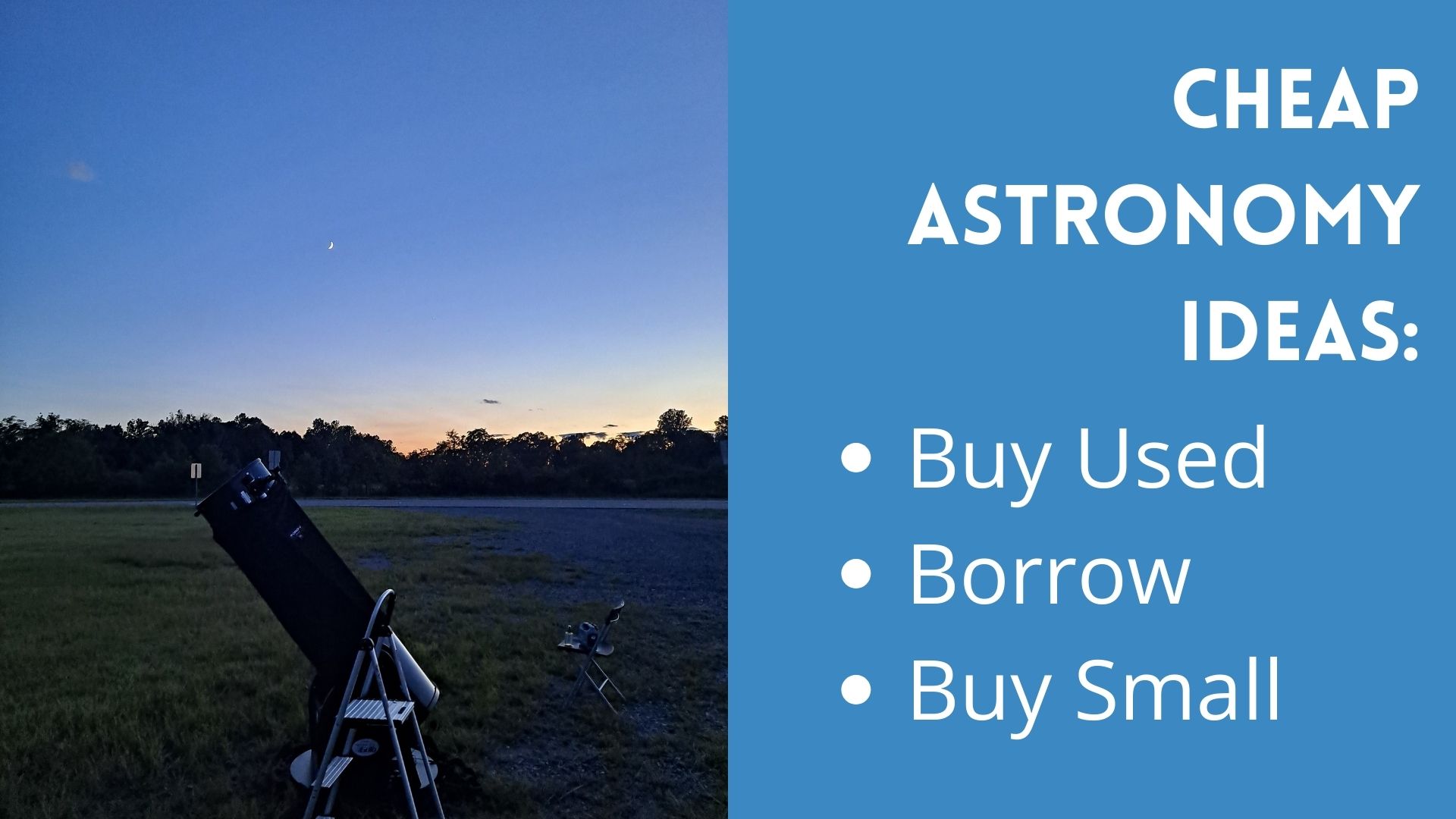What if you got the telescope for Christmas? Are you doomed to wait till warmer weather before you go observing? How does the cold affect your telescope?
Telescopes function best at ambient temperature. This is the temperature of the air. To observe in the cold, allow your telescope 30 minutes to an hour to come to the same temperature as the air. You can use a dew heater, dew shield, hair dryer or hot hands to help speed up the warming process.
Telescopes can be used in very cold weather as long as they are given appropriate time to acclimate to the ambient temperature.
This means bringing your scope out to the area where you will be observing 30 minutes to an hour before you can observe clearly.
Cooling fans, dew heaters, dew shields, hair dryers, eyepiece warmers, humidity and elevation can all affect the time it takes for the scope to come to ambient temperature.
I use a dew heater and this lens warmer to help speed up the process of acclimation. In my area the humidity is a bigger issue than the cold.
I find that my comfort is what often ends a viewing session.
Dress warmly for the weather, you will be sitting still for hours in the cold. I recommend wool or electric socks, like these I purchased on Amazon.
Be sure to give yourself more time than you think you need when observing in cold conditions.

Can it be too cold to observe?
As long as you can withstand the cold, your scope can too. Wear warm socks, base layers under your clothes and shelter yourself from the wind when possible. Take breaks in your car if you need to. When conditions are favorable for frost to form on your mirrors you will want to be able to warm your mirrors so they do not get clouded with frost.
Use a dew heater, warmed dew shield, hair dryer or hot hands depending on if your location has electricity.
I use a portable generator to power my dew heaters. I also use electric or wool socks.
If you are observing in very cold conditions, turn off your cooling fan after the mirrors are clear. Only turn them on if the temperature drastically changes.
Your telescope is made of metal and glass. The metal will shrink and expand with the temperature so it is possible you will have to collimate more frequently in very high or very low temperatures or any time there is a drastic change in temperature.
I find that my truss tube telescope has to be collimated much more frequently than my solid tube.
The glass, however is not effected in the same way as the metal. The main issue is condensation, so if your area has any humidity, be prepared with a solution.
How does the dew point affect your telescope?
You may not know how much the weather affects your ability to observe.
I use Astrospheric to check cloud cover, dew point, transparency, seeing and temperature. I never expected to care this much about the weather.
I had no idea how much weather would impact this hobby.
The first thing I check is cloud cover and seeing (which refers to the stability of the atmosphere), then I check the dew point.
The dew point refers to the amount of moisture in the air. When the dew point and the temperature are the same the humidity is 100%.
As a general rule, if the dew point is within 10 degrees of the ambient temperature then I would be sure to use my dew protection. A dew heater or dew shield and a proper acclimation period are the best defense against dew, which clouds your mirrors.
If you have difficulty with dew accumulation on your telescope, consider observing at a higher elevation where there is less humidity.
You may also need to invest in a hair dryer to dry and heat the mirrors.
Why can’t I see anything in my telescope in the cold?
If when you begin viewing with a telescope that is not properly acclimated you may see a bright ball of light in the center of the field when viewing a bright object. You may see a blurry or poor quality image.
You can correct this by allowing at least 30 minutes to an hour
Do I need a dew heater for my telescope?
Dobsonian telescopes require a dew heater or another warming solution on your secondary mirror. Those who do not have electricity available while viewing use hot hands to warm their mirrors. Some people invest in travel hair dryers to raise the temperature on their mirror.
While it can seem like an unnecessary expense, but you will save a lot of time waiting for your mirrors to defog.
Be sure to buy the correct size dew heater for your telescope.
I bought the large size from R-Sky for my 16” dobsonian, the guy was great about emailing me back with any questions I had.
How do I install a dew heater?
I own a Dobsonian Truss Tube and I bought the R-Sky dew heater for my 10’.
It wraps around the back of your secondary mirror.
I was frustrated by the cords, so I taped them along my spider veins so they do not obstruct my view when observing. A small piece sticks out between my light shroud and my upper tube assembly so I can plug it in.
I recently had a night when my dew heater stopped working. My father in law and I took apart the whole assembly and found a washer that was rattling around and caused a short.
After the fix I was left with only one port to connect the dew heater to power. The standard set up allows for connection of an eyepiece warmer. I do not have one so it was not a big loss to me, but I was frustrated by the lack of quality.
Now I have to bend the wires to keep the connection.
It is easy to tell if your dew heater is not working by touching it. It should always be warm to the touch. It does not cycle on and off.
I will be investing in the Thousand Oaks model in the future.
Dew Shield vs Dew Heater
A dew heater wraps around your mirror to heat the mirror
A dew shield cradles and insulates the secondary mirror by extending the length of the optical tube.
In my telescope I never have dew on my primary mirror because it is so deep in the optical tube. The moisture does not reach that area.
Dew shields are often a standard part of a refractor telescope. Larger, reflector telescopes will often need a dew shield.
Dew shields can be purchased, but are easily created out of metal, plastic or even paper.
You can DIY a dew shield with cardboard, it absorbs water and helps insulate the mirror. This is the best solution for a new observer as it is simple and easy to find.
This genius solution uses a 5 gallon bucket.
What is telescope cooldown?
Telescope cooldown is the time it takes your telescope to come to ambient temperature when viewing.
Ambient temperature is the temperature of the air around your telescope.
When you bring your telescope outside from your indoor
When viewing through a telescope that has not properly acclimated to the ambient temperature your image will be blurry or distorted.
If you have properly collimated your scope, have removed the dust cap and there is no fog in your eyepiece, then wait a few more minutes until your scope is completely acclimated.
Some telescopes may require more frequent columation when viewing for crisp seeing.




